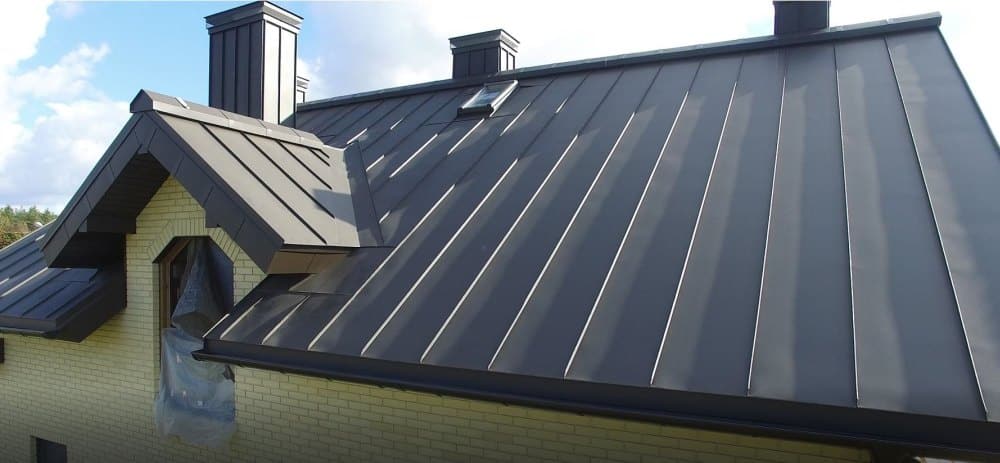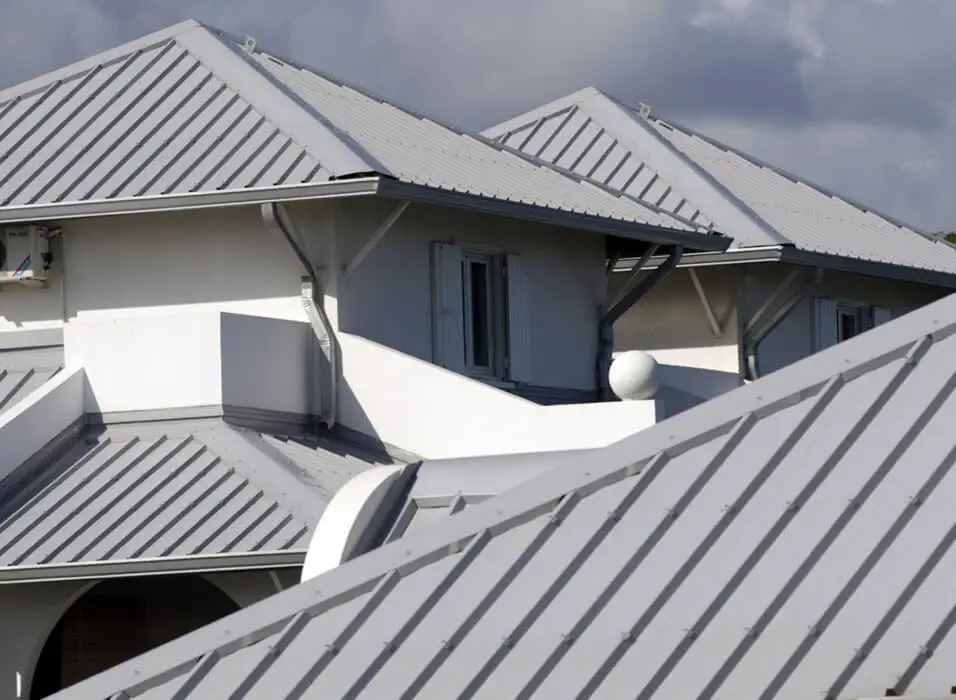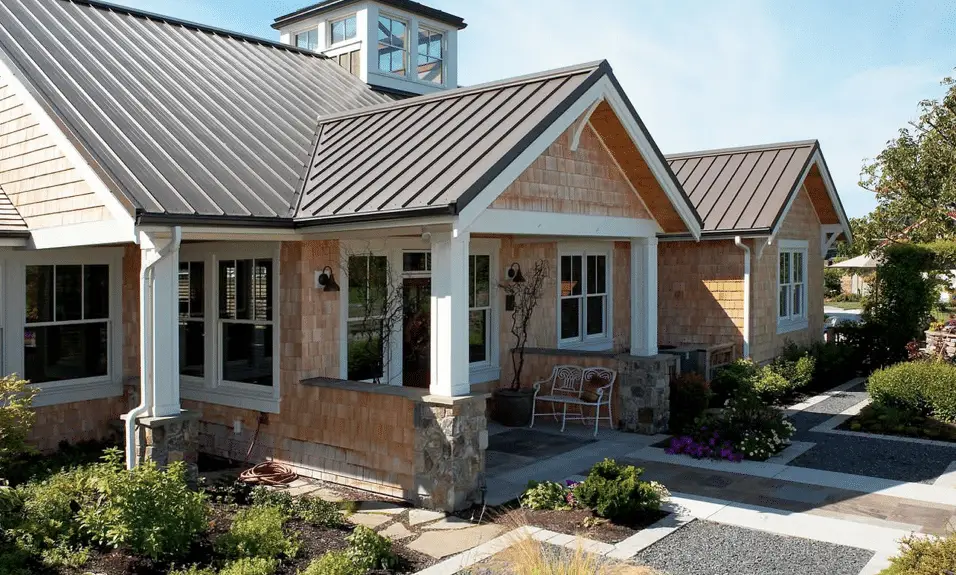How To Install Metal Roofing Over Plywood
Introduction
How To Install Metal Roofing Over Plywood: Installing metal roofing over plywood is a popular choice for homeowners looking to enhance the durability and aesthetic appeal of their roofs. Metal roofs offer numerous advantages, including longevity, energy efficiency, and resistance to fire, wind, and hail. However, proper installation is crucial to ensure the longevity and performance of the metal roofing system. In this article, we will provide you with a step-by-step guide on how to install metal roofing over plywood, ensuring a successful and long-lasting installation.
Metal roofing has gained significant popularity in recent years due to its exceptional durability and longevity. This sustainable aspect, combined with its energy efficiency, makes metal roofing an attractive choice for eco-conscious homeowners.
Before diving into the installation process, it is essential to gather all the necessary tools and materials. Replace any damaged plywood sheets to ensure a solid and stable base for the metal roofing installation. Additionally, ensure that the roof deck is clean and free from debris, as any protrusions or irregularities can affect the metal roofing’s performance.

Can you install metal roofing directly on plywood?
If you’re wondering if you can put a metal roof directly on plywood, here’s the answer: No.
Installing metal roofing directly on plywood is not recommended. While plywood is a common material used for roof sheathing, it is not suitable as a base for metal roofing. Metal roofing requires a solid and stable surface to ensure proper installation and long-term performance. Plywood alone does not provide the necessary support and protection for metal roofing.
Plywood is a type of engineered wood made from thin layers of wood veneer glued together. While it is a strong and durable material, it has certain limitations when it comes to supporting metal roofing. Plywood tends to flex and warp over time, especially when exposed to moisture and temperature changes. This movement can cause the metal roofing to shift and potentially lead to leaks or other issues.
What kind of plywood do you use under a metal roof?
The most common types of plywood used for roof sheathing are oriented strand board (OSB) and CDX plywood.
Types of Plywood for Metal Roof Underlayment:
CDX Plywood: Because it is durable and cheap, CDX plywood is often used as a covering for metal roofs. CDX plywood doesn’t get wet easily and can handle the weight of the metal roof. It’s usually sold in sheets that are 4 feet by 8 feet, and it can be used for most types of residential and business roofing.
OSB Plywood: Oriented Strand Board (OSB) plywood is another choice that is often used for metal roof underlayment. Strings of wood are pressed together and glued together in a certain way to make it. It doesn’t absorb water either, and it keeps heat in well. But it’s important to make sure that the OSB plywood used is made to be used for roof covering.
Considerations for Choosing Plywood:
Thickness: The thickness of the plywood used for metal roof underlayment depends on various factors, including the spacing of the roof trusses or rafters. Thicker plywood is generally recommended for larger spans or areas with heavy snow loads.
Grade: Plywood is graded based on its quality and appearance.
Treatment:
Some types of plywood are treated with preservatives to enhance their resistance to moisture, insects, and decay.
In conclusion, choosing the right kind of plywood for underlayment is essential for a successful metal roof installation. CDX plywood and OSB plywood are two commonly used options, each with its own advantages. Factors such as thickness, grade, and treatment should be considered when selecting plywood for metal roof underlayment. By using the appropriate plywood, you can ensure the stability, durability, and longevity of your metal roof.
What is the minimum plywood thickness for a metal roof?
Recommended Plywood Thickness for Different Types of RoofsFor a metal roof, you should use thicker plywood, usually a minimum thickness of 3/4 inches.
When it comes to installing a metal roof, one important consideration is the minimum plywood thickness required for proper support. Plywood serves as the base for the metal roof, providing stability and strength. The thickness of the plywood directly affects the overall performance and durability of the roof. Therefore, it is crucial to determine the appropriate plywood thickness to ensure the roof’s longevity and structural integrity.
Factors influencing plywood thickness:
Several factors influence the minimum plywood thickness for a metal roof. The first factor is the spacing of the roof trusses or rafters. The distance between the trusses determines the load-bearing capacity of the plywood. Generally, the wider the spacing, the thicker the plywood required to prevent sagging or buckling under the weight of the metal roof.
Another factor to consider is the type of metal roofing being installed. Different types of metal roofs have varying weights and structural requirements. For instance, standing seam metal roofs are typically lighter than corrugated metal roofs. Therefore, the minimum plywood thickness may differ depending on the specific type of metal roof being installed.
Recommended plywood thickness:
The sizes show how thick of plywood a metal roof needs, but it’s better to go with 1/2 inch. Most metal roofs can handle this thickness. For rules, check with the maker and your local building codes.
When planning the metal roof, think about the weather and other factors in your area. Strong boards may be needed when there is a lot of snow or wind. A roofer or structural engineer can tell you what thickness plywood to use based on these factors.
How thick plywood needs to be for metal roofs depends on the type of roof, the distance between the trusses, and the building rules in your area. It is suggested that the depth be at least 1/2 inch, but for the roof to be stable and last a long time, it needs specific instructions and help from professionals. The right amount of boards can make a metal roof last longer.
What material do you put under metal roofing?
Felt Underlayment (Asphalt Felt or Tar Paper)
It’s known by many names, including felt paper, tar paper, and asphalt-soaked felt. But no matter what you call it, felt underlayment is the most common underlayment material used for steeper-sloped metal roofs.
When it comes to installing metal roofing, it is essential to consider the materials that go underneath it. In this article, we will explore the various materials commonly used under metal roofing and their benefits.
Types of Underlayment:
Synthetic Underlayment: One popular choice for metal roofing is synthetic underlayment. Made from polypropylene or polyester, this type of underlayment offers excellent durability and resistance to moisture. Synthetic underlayment is lightweight, easy to install, and provides a high level of protection against water infiltration. It also acts as a secondary barrier against wind-driven rain and helps to prevent leaks.
Felt Underlayment: Another commonly used material under metal roofing is felt underlayment. Typically made from asphalt-saturated organic or fiberglass material, felt underlayment is affordable and readily available.
Benefits of Underlayment:
Protection Against Moisture: One of the main jobs of flooring is to keep the roof dry. This keeps rot, mold, and other damage from water from happening.
Setting the right temperature: Underlayment also helps set the right temperature. It helps keep the roof warm by blocking heat transfer. This keeps the house cooler when it’s hot outside. This can help save energy and cut down on cooling costs.
Getting rid of noise: Metal roofs can be noisy when it rains or hails a lot. It is quieter and more comfy to live or work where the underlayment helps to dampen the sound.
Picking the right flooring for a metal roof is very important for how well it works and how long it lasts. Synthetic underlayment is very durable and doesn’t absorb water, while felt underlayment is cheap and provides padding. Both choices help keep out wetness, keep the temperature stable, and lower noise. Your metal roof has special needs when it comes to underlayment materials. You should talk to a professional roofing contractor about this.
Do you need plywood under a metal roof?
Importance of Plywood Under a Metal Roof:
Using plywood as an underlayment for a metal roof offers several benefits. Firstly, it provides a smooth and stable surface for the metal panels to be installed on. This helps to prevent any undulations or irregularities in the roof surface from being transferred to the metal roof, ensuring a more aesthetically pleasing and uniform appearance. Additionally, plywood helps to distribute the weight of the metal roof evenly across the roof structure, reducing the risk of structural damage and improving the overall stability of the roof.
Furthermore, plywood acts as a secondary layer of protection against moisture infiltration. While metal roofs are generally highly resistant to water, there is still a possibility of water seeping through the seams or around fasteners. Plywood acts as a barrier, preventing any water that may penetrate the metal roof from reaching the underlying roof structure. This can help to prevent rot, mold, and other moisture-related issues that could compromise the integrity of the roof.
When Plywood is Necessary:
While plywood underlayment offers numerous advantages, it is not always necessary for every metal roof installation. In some cases, such as when installing a metal roof over an existing asphalt shingle roof, the shingles can act as a sufficient underlayment. However, there are certain situations where plywood is highly recommended.
One such situation is when the roof has a low slope or is prone to ice damming. Plywood provides additional support and helps to prevent water from pooling or backing up under the metal roof, reducing the risk of leaks and water damage. Similarly, in areas with high wind speeds or frequent storms, plywood can enhance the wind uplift resistance of the roof, making it more secure and durable.
Once the underlayment is in place, the metal roofing panels can be installed. It is important to carefully measure and cut the panels to fit the roof dimensions accurately. The panels should be fastened securely to the plywood using appropriate screws or nails, ensuring they are properly aligned and overlapping correctly to provide adequate protection against water infiltration.
What tools and materials are needed for the installation of metal roofing over plywood?
When it comes to installing metal roofing over plywood, there are several essential tools and materials that you will need to ensure a successful installation. These include:
Metal Roofing Panels: The most important material needed for this installation is the metal roofing panels themselves. These panels are typically made of durable materials such as steel or aluminum, and they come in various styles and colors to suit your aesthetic preferences.
Plywood Sheathing: Before installing the metal roofing panels, you will need to have a solid plywood sheathing in place. This provides a stable base for the panels and helps to ensure a secure and long-lasting installation.
Roofing Underlayment: To provide an extra layer of protection against moisture and to improve insulation, it is recommended to use roofing underlayment. This material is typically made of synthetic or felt materials and is installed between the plywood sheathing and the metal roofing panels.
Roofing Nails or Screws: To secure the metal roofing panels to the plywood sheathing, you will need roofing nails or screws. These should be specifically designed for metal roofing installations to ensure proper fastening and prevent any potential damage to the panels.
5. a metal roofing shear. These tools will help you accurately measure and cut the panels, as well as secure them in place.
Overall, having the right tools and materials is crucial for a successful installation of metal roofing over plywood. It is important to follow the manufacturer’s instructions and guidelines to ensure proper installation and maximize the longevity of your metal roof.
Are there any specific safety precautions that need to be taken during the installation process?
When installing metal roofing over plywood, it is crucial to prioritize safety to prevent any accidents or injuries. There are several specific safety precautions that should be taken during the installation process.
Firstly, it is essential to wear appropriate personal protective equipment (PPE) such as gloves, safety glasses, and sturdy footwear. This will help protect against any potential hazards, including sharp edges, falling debris, or accidental tool mishaps.
Secondly, it is important to ensure proper ladder safety. Always use a sturdy and stable ladder that is appropriate for the height of the installation. Make sure the ladder is placed on a level surface and secured to prevent any wobbling or slipping. Additionally, consider using ladder stabilizers or standoffs to provide extra stability and prevent damage to the roof or gutters.
Lastly, be cautious of electrical hazards. Metal roofing can conduct electricity, so it is crucial to be aware of any nearby power lines or electrical equipment. Take necessary precautions to avoid contact with live wires and ensure that all electrical sources are properly grounded or turned off during the installation process.
By following these safety precautions, you can minimize the risk of accidents and ensure a safe installation of metal roofing over plywood.
Can metal roofing be installed over any type of plywood, or are there specific requirements?
When it comes to installing metal roofing over plywood, it is important to consider the specific requirements for the type of plywood being used. While metal roofing can generally be installed over most types of plywood, there are a few important factors to keep in mind.
The first requirement is the thickness of the plywood. It is recommended to use plywood that is at least 1/2 inch thick for metal roofing installation. Thinner plywood may not provide enough support for the weight of the metal roofing panels, leading to potential issues such as sagging or buckling over time.
The second requirement is the condition of the plywood. It is crucial to ensure that the plywood is in good condition, free from any rot, damage, or warping. Any weak spots or imperfections in the plywood can compromise the integrity of the metal roofing installation and may result in leaks or other problems down the line.
Additionally, the plywood should be properly fastened to the roof structure. It is important to use the appropriate nails or screws that are recommended by the metal roofing manufacturer. These fasteners should be long enough to penetrate through the plywood and securely attach it to the roof structure, providing a solid foundation for the metal roofing panels.
In summary, while metal roofing can generally be installed over most types of plywood, it is crucial to ensure that the plywood meets the thickness requirement, is in good condition, and is properly fastened to the roof structure. Following these specific requirements will help ensure a successful installation of metal roofing over plywood.
Can metal roofing be installed over any type of plywood, or are there specific requirements?
It’s important to think about the type and state of the plywood before putting metal roofing over it. Metal roofing can usually be put on top of plywood, but there are some things that need to be done right for the work to go smoothly.
The thickness of the board is the first thing that needs to be met. When installing a metal roof, it is best to use plywood that is at least 1/2 inch thick. Thick plywood gives the metal pieces more support and stability, which lowers the chance that they will sag or get damaged over time.
The second requirement is that the board must be in good shape.
It is very important to make sure that the board is in good shape and doesn’t have any rot, moisture damage, or structural problems. Before putting on the metal roof, any weak or broken spots should be fixed or replaced. This will help keep problems from happening in the future and make sure the roof lasts a long time.
The plywood should also be properly attached to the roof frame. It is best to use screws or nails that are made especially for installing metal roofs. These fasteners need to be spaced out correctly and pushed all the way into the plywood and the roof support below it. This will give the metal pieces the support they need and keep them from moving or becoming loose over time.
In conclusion, metal roofing can be put on top of plywood. However, it is important to use the right thickness of plywood, make sure it is in good shape, and attach it to the roof frame correctly. If you follow these specific steps, you can be sure that the work goes smoothly and that the metal roof will last for a long time.

Conclusion
Installing metal roofing over plywood is a practical and efficient way to enhance the durability and longevity of your roof. This conclusion will summarize the key points discussed in this article and provide a final perspective on the topic.
First and foremost, it is crucial to prepare the plywood surface before installing the metal roofing. This involves ensuring that the plywood is in good condition, free from any rot or damage. Additionally, it is important to apply a layer of roofing felt or underlayment to provide an extra layer of protection against moisture and potential leaks. By taking these preparatory steps, you can create a solid foundation for the metal roofing and prevent any future issues.
Next, the actual installation process requires careful attention to detail. It is essential to use the correct tools and materials, such as metal roofing screws and a drill with a metal-cutting blade. Properly aligning and securing install metal panels is crucial to ensure a tight fit and prevent any gaps or vulnerabilities. Additionally, it is important to follow the manufacturer’s instructions regarding overlap and fastening methods to ensure the best results.
Lastly, regular maintenance and inspections are key to prolonging the lifespan of your metal roof. While metal roofing is known for its durability, it is still important to periodically check for any loose screws, damaged panels, or signs of wear and tear. By addressing any issues promptly, you can prevent further damage and extend the life of your roof.








